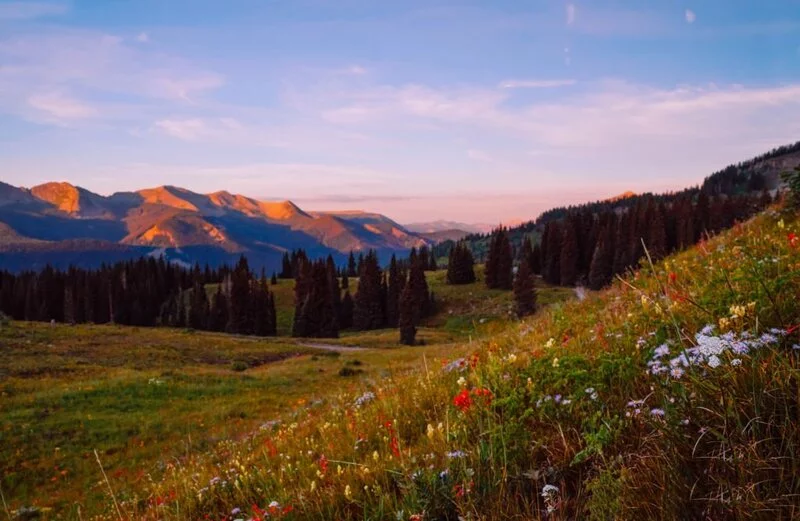Imagine walking through a meadow on a beautiful spring morning. The sun is shining, birds are singing, and all around you, a sea of wildflowers is dancing in the breeze. It’s a sight that captures the heart, and it’s a gift that nature bestows upon us year after year. But have you ever stopped to wonder, do these wildflowers come back every year? Well, dear reader, you’re in for a treat, because today we’re exploring the fascinating world of wildflowers and their lifecycles.
- Annual and Perennial Mix: Bulk wildflower seed packets with a blend of annual and perennial varieties; suitable for all zones
- Pollinator-Friendly: Wildflower mix attracts butterflies, hummingbirds, and bees; enhances garden pollination with beautiful blooms
- Family-Owned Business: Hand-packaged wildflower seeds from a small, family-run company dedicated to quality and customer care
What are Wildflowers?
So, what exactly are wildflowers? The name might give you a clue. Wildflowers are flowers that grow in the wild, without any human intervention. They’re the rebels of the plant world, growing where they please, from the cracks in a city sidewalk to the top of a mountain.
Wildflowers come in all shapes, sizes, and colors, making them a delight for the eyes. Think of the cheerful yellow of dandelions, the delicate white of Queen Anne’s lace, or the striking blue of cornflowers. But wildflowers aren’t just pretty faces. They’re also key players in our ecosystems, providing food and habitats for many creatures.
Now that we’ve introduced our colorful friends, let’s dive into their life cycles and find out if they return each year.
The Life Cycles of Wildflowers: Annuals, Biennials, and Perennials
In the world of wildflowers, not all flowers live the same way or for the same length of time. In fact, wildflowers can be grouped into three main categories based on their life cycles: annuals, biennials, and perennials.
Annuals are the shooting stars of the flower world. They sprout, bloom, produce seeds, and die all in one year. But don’t worry, they often leave behind a bounty of seeds ready to start the show again next year.
Biennials are the two-year planners of wildflowers. In the first year, they focus on growing leaves and storing energy. It’s not until their second year that they burst into bloom, produce seeds, and then, their job complete, they die.
Perennials are the long-distance runners. These plants live for several years, blooming and producing seeds each year. After their winter rest, they spring back to life, ready to dazzle us again with their blooms.
Annual Wildflowers
Let’s take a closer look at annual wildflowers. Remember, these are the ones that live for just one year. But don’t let their short lifespan fool you. Annuals, like poppies or cosmos, make the most of their time, blooming brilliantly and producing a plethora of seeds.
These seeds then wait patiently for the right conditions to start their own life journey. That’s why, even though the parent plant dies after one year, it may seem like the same wildflowers come back every year. The reality is that it’s their offspring taking center stage. Clever, isn’t it?
Biennial and Perennial Wildflowers
Moving on to the marathoners of the wildflower world: biennials and perennials. Biennials, like foxgloves or evening primroses, have a two-year lifecycle. The first year is all about growing their leaves and storing up energy. In their second year, they put on a stunning floral show, set seed, and then take their final bow.
Perennials, like echinacea or lupines, have the longest lifecycle of all. They come back year after year, painting the landscape with their vibrant blooms each season. So yes, many of our beloved wildflowers do indeed come back each year, thanks to the stamina of perennials and the seed-spreading strategies of annuals and biennials.
Encouraging Wildflowers in Your Garden
Want to encourage a wildflower show in your own garden? Here are a few tips:
- Let nature do its thing: Don’t be too quick to tidy up. Leave some fallen leaves or dried plants over winter. They might be providing a home for next year’s wildflowers.
- Spread the love: Collect and scatter seeds from your favorite wildflowers to help them spread.
- Provide a welcoming habitat: Different wildflowers like different conditions. Some like it sunny, others prefer the shade. Make your garden a welcoming place for a variety of wildflowers.
Remember, every wildflower counts, making our world a little more beautiful and a lot more biodiverse.
Conclusion
So there you have it. The next time you see a meadow awash with the colors of wildflowers, you’ll know the secret of their return. It’s a beautiful cycle of life, growth, and renewal, happening right under our noses, year after year. Whether they’re annuals, biennials, or perennials, wildflowers have a special way of reminding us of the enduring beauty and resilience of nature. So let’s treasure them, encourage them, and look forward to their return each year. After all, a world with wildflowers is a world teeming with life, color, and joy.




